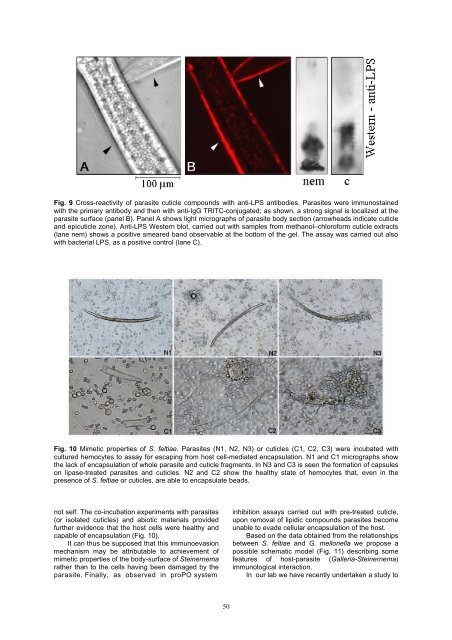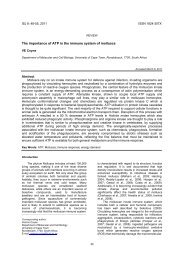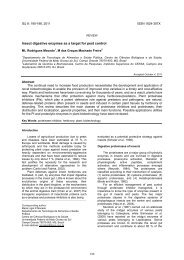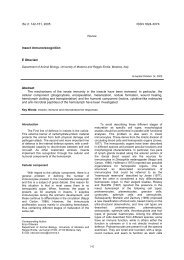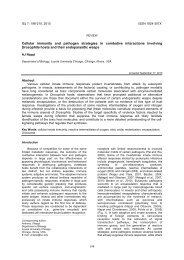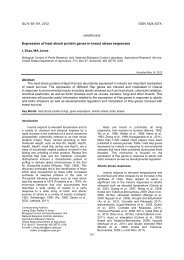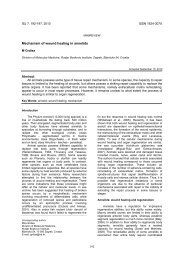Parasite-host relationship: a lesson from a professional killer
Parasite-host relationship: a lesson from a professional killer
Parasite-host relationship: a lesson from a professional killer
Create successful ePaper yourself
Turn your PDF publications into a flip-book with our unique Google optimized e-Paper software.
Fig. 9 Cross-reactivity of parasite cuticle compounds with anti-LPS antibodies. <strong>Parasite</strong>s were immunostained<br />
with the primary antibody and then with anti-IgG TRITC-conjugated; as shown, a strong signal is localized at the<br />
parasite surface (panel B). Panel A shows light micrographs of parasite body section (arrowheads indicate cuticle<br />
and epicuticle zone). Anti-LPS Western blot, carried out with samples <strong>from</strong> methanol–chloroform cuticle extracts<br />
(lane nem) shows a positive smeared band observable at the bottom of the gel. The assay was carried out also<br />
with bacterial LPS, as a positive control (lane C).<br />
Fig. 10 Mimetic properties of S. feltiae. <strong>Parasite</strong>s (N1, N2, N3) or cuticles (C1, C2, C3) were incubated with<br />
cultured hemocytes to assay for escaping <strong>from</strong> <strong>host</strong> cell-mediated encapsulation. N1 and C1 micrographs show<br />
the lack of encapsulation of whole parasite and cuticle fragments. In N3 and C3 is seen the formation of capsules<br />
on lipase-treated parasites and cuticles. N2 and C2 show the healthy state of hemocytes that, even in the<br />
presence of S. feltiae or cuticles, are able to encapsulate beads.<br />
not self. The co-incubation experiments with parasites<br />
(or isolated cuticles) and abiotic materials provided<br />
further evidence that the <strong>host</strong> cells were healthy and<br />
capable of encapsulation (Fig. 10).<br />
It can thus be supposed that this immunoevasion<br />
mechanism may be attributable to achievement of<br />
mimetic properties of the body-surface of Steinernema<br />
rather than to the cells having been damaged by the<br />
parasite. Finally, as observed in proPO system<br />
50<br />
inhibition assays carried out with pre-treated cuticle,<br />
upon removal of lipidic compounds parasites become<br />
unable to evade cellular encapsulation of the <strong>host</strong>.<br />
Based on the data obtained <strong>from</strong> the <strong>relationship</strong>s<br />
between S. feltiae and G. mellonella we propose a<br />
possible schematic model (Fig. 11) describing some<br />
features of <strong>host</strong>-parasite (Galleria-Steinernema)<br />
immunological interaction.<br />
In our lab we have recently undertaken a study to


